Feeling burnt out from endless meetings and Zoom calls? September is the perfect time for a mental reset trip in Europe. The summer crowds have thinned, prices drop, and a cozy autumn vibe takes over the continent. In fact, more travelers are embracing September travel than ever. 22% of Europeans are eyeing trips this month, drawn by better weather, lower costs, and fewer crowds. As a 30–45 year-old corporate professional, you deserve a soul-soothing break.
So pack your scarf, your favorite leather-bound notebook, and maybe a spare memory card , we’re going on a “Europe mental reset trip” through some of the continent’s most moody, intellectual cities! ✈️
In this guide, we’ll explore 7 dark academia-inspired European cities perfect for a September escape. Think ivy-draped libraries, winding cobblestone alleys, candlelit cafés, and autumn leaves swirling around Gothic spires. Each destination comes with mid-budget friendly hotel picks (from charming boutiques to familiar chains like Marriott, IHG, and Hyatt at ~€100–€250/night), solo travel tips (safety, transit, walkability), offbeat attractions to avoid the crowds, and even pointers on using your Amex, Chase, or Bonvoy points to save money. We’ll keep it friendly, funny, and warm, like an old friend dishing out travel advice over coffee (or perhaps a pint of Guinness 😉). Ready to recharge Dark-Academia-style? Let’s go! 🎒✨
This post contains affiliate links. By clicking on the link I may earn a commission to no extra cost to you. Links are marked „*“.
Dublin, Ireland – Bookish Charm & Cozy Pub Comfort ☘️📖
Why Go:
For a mix of intellectual charm and hearty fun, you can’t beat Dublin in the fall. This city blends moody academia with the warm soul of Ireland. At Trinity College, the 18th-century Long Room library will take your breath away, two levels of ancient books under a vaulted wooden ceiling, complete with the scent of aged parchment and dust motes dancing in sunbeams. It’s basically a dark academia pilgrimage site (don’t miss seeing the Book of Kells exhibit too for some illuminated-manuscript magic).
Outside, Dublin’s autumn brings misty mornings and the occasional soft rain (“a good excuse to duck into a pub” as the locals say!). Literature is everywhere, from James Joyce quotes on plaques to the heritage bookstores along the River Liffey.
Offbeat Charm: After the must-do’s (Trinity, St. Patrick’s Cathedral, maybe the Guinness Storehouse for some craic), discover Dublin’s quieter corners. Tuck into Marsh’s Library near St. Patrick’s. It’s one of Europe’s oldest public libraries (1707) and often overlooked. Creaky oak bookcases, chained books, and zero crowds , you might feel like an 18th-century scholar here. Wander the Georgian streets of Merrion Square where Oscar Wilde’s childhood home stands (a statue of Wilde lounges in the park, as witty and carefree as his writing). In the evening, skip the over-touristy Temple Bar pub hub and head to Davy Byrne’s or The Stag’s Head . Historic pubs where Joyce and other writers drank.
Pro tip: Grab a seat by the fire, order an Irish stew or a pint of Guinness, and you might hear live traditional music or at least some colorful local storytelling.
Solo Travel Tips:
Dublin is very welcoming to solo travelers. The Irish will chat your ear off if you’re up for conversation. English-speaking, of course, so no language barriers. The city center is walkable; you can stroll from Trinity to Dublin Castle to Grafton Street easily. Public transport includes buses and the LUAS tram; they’re safe and convenient if needed (like getting out to the Kilmainham Gaol or Phoenix Park).
Safety: Dublin is generally safe, with the usual city caution. Watch for pickpockets in crowded areas and mind your belongings after a couple pints. Late at night, stick to well-lit central areas, the Temple Bar district can get rowdy (and pricey) after dark, so consider enjoying the pub culture in slightly quieter neighborhoods like Rathmines or Smithfield if you prefer a mellower vibe.
Stay:
Dublin has a range of mid-budget accommodations. For boutique lovers, The Dean Dublin* is a trendy option: modern design, a cool rooftop bar, and a fun music theme (there’s a record player in your room with some vinyls!). It’s around €200/night and gives a local, creative flavor.
For chain comfort, check out Hyatt Centric The Liberties* Dublin, a new 4-star in the heart of the Liberties area. Rooms are often ~€180, and you can use Hyatt points (~15,000 points/night, a solid deal). It’s walking distance to St. Patrick’s and has a great breakfast to start your day.
Marriott loyalists might try the Moxy Dublin City* in downtown, a playful, boutique-style Marriott property. It’s Ireland’s first Moxy, with a 24/7 bar and stylish lobby, usually well under €200.
Fun fact: The Moxy is near Trinity and Temple Bar, and Moxy even notes that Dublin’s literary heritage surrounds you, with writers, artists and intellectuals having flocked to these streets for centuries. So you’ll be in good company (past or present)!
I, personally love the Motel One* Hotels in every city. They are a design hotel chain, that focuses on local history and culture. I loved our room in Dublin and I would have packed that hotel bar into my luggage if it had fit.
Points & Perks:
Leverage those credit card rewards here. Chase Ultimate Rewards transfer to Avios can book you a flight directly into Dublin (Aer Lingus is an Avios partner, often with low surcharges). Once on the ground, your Amex Platinum card’s Global Entry benefit will speed you through US pre-clearance on the way home (Dublin does US customs pre-clearance, a huge time-saver).
For hotels, Hyatt’s partnership with Chase UR means you could stay at the Hyatt Centric for free if you have some points banked. And if you hold a Marriott Bonvoy free night certificate, the funky Aloft Dublin City (Marriott) is another option around 30k points that could be fully covered. Use those savings to treat yourself to a nice meal at a literary pub or to buy that signed first-edition novel you spotted!
Ghent, Belgium – Medieval Mystery by Candlelight 🕯️📜
Ghent’s enchanting riverside at twilight, fewer tourists than Bruges, but equally fairytale-like with a moody twist.
Why Go:
Picture a medieval city with canals, gothic spires, and virtually no tourists clogging the streets, that’s Ghent in a nutshell.
Often overshadowed by its pretty neighbor Bruges, Ghent is a hidden gem beloved by those in the know (and apparently 55% of Europeans now prefer such lesser-known spots to avoid overtourism). The city is less crowded than Bruges but just as enchanting, with old stone buildings, flickering lantern-lit lanes, and grand university halls imbued with centuries of scholarship. In autumn, Ghent’s tree-lined canals blaze with color, and a slight fog might roll in over the Lys River at dawn, adding to the mystery.
If you crave dark academia vibes, Ghent delivers with a touch of Flemish coziness.
Offbeat Charm: Start at the Boekentoren (“Book Tower”), Ghent University’s modernist tower library. It holds rare manuscripts and has a panoramic view of the city, a pilgrimage for architecture and book nerds alike. Next, visit St. Bavo’s Cathedral not just for the famous Van Eyck painting, but also for the eerie crypt below, wonderfully chilling and quiet. Meander through the Patershol district, a medieval quarter of narrow alleys now filled with quirky cafes and galleries; at night, lanterns cast golden light on the cobbles. Ghent even has a castle in the city center – Gravensteen Castle – complete with a torture museum (talk about getting dark!). Go in the evening for atmospheric vibes and maybe a ghost story or two.
And if you’re a fan of academia history: the Ghent University Aula is an impressive neoclassical hall often open for events. Poke your head in to imagine attending a 19th-century lecture there.
Solo Travel Tips:
Ghent is compact and extremely walkable (or bikeable – Flanders loves cyclists!). As a solo traveler, you’ll find it safe and easy to get around. The city center is pedestrian-friendly, and you can rent a bike if you want to live like a local student. Many locals speak excellent English, but throwing in a “dank u” (thank you) in Flamish will earn you a smile. Public transit includes trams and buses that connect the train station and outskirts, but within the historic center you likely won’t need them.
Safety: Ghent is very safe; standard awareness is all that’s needed. Perhaps the biggest “danger” is getting lost in picturesque lanes – but hey, that’s half the fun. If you’re out late, the area around Korenmarkt (main square) stays lively with students, and you can always pop into a “brown café” (cozy pub) if you need a break or some company.
Stay:
To fully soak in the atmosphere, consider 1898 The Post,* a boutique hotel set in Ghent’s former main post office building (a gorgeous Neo-Gothic gem). With only 38 rooms, it’s intimate and styled with vintage decor. You’ll feel like you’re staying in a Victorian writer’s private club. It also houses The Cobbler cocktail bar, one of the best in Belgium (don’t miss a nightcap there under the twinkling chandeliers). Rates hover around €200, but the experience is worth every penny.
For a chain option, the Ghent Marriott Hotel sits right on the canal at Korenlei and blends a modern hotel into a row of historic facades. You get the reliability of Marriott with a setting that’s anything but cookie-cutter, the lobby has a giant glass atrium and exposed brick from the 15th-century house it’s built into. Rooms (from ~€160) often have river views. And yes, Marriott Bonvoy points are welcome – about 25,000–30,000 points per night. Bonvoy elites even get free breakfast in the riverfront restaurant, fueling you for long walks.
Points & Perks:
Getting to Ghent can be part of the fun: fly into Brussels (which is easily done on points via United or American Airlines miles) and then take a 30-minute train to Ghent. No flights needed within Belgium, trains and trams do the trick. If you have a Eurail pass or just a ticket, Ghent is on the main line between Brussels and Bruges.
For hotels, consider using a Marriott Free Night Award from your Bonvoy credit card. The Ghent Marriott is a great way to redeem it without high-category prices. Also, if you’re a Chase Sapphire Reserve holder, you could book your hotel through the Chase travel portal using points (at 1.5 cents value), sometimes a good way to use those UR points if you’re short on Bonvoy.
Finally, treat yourself to a Belgian waffle or three, not a points tip, just life advice. You’re in Belgium, after all!
Cambridge, England – Scholars, Punts & Autumn Light 📚🍂
Why Go:
If Oxford is the brooding novel hero, Cambridge is the poetic dreamer. Home to one of the world’s most prestigious universities, this city hums with intellectual energy and history dating back to 1209. In September, the student term is about to begin, so the cobbled lanes and collegiate courtyards buzz with quiet anticipation. Add in the soft golden light over the River Cam, and it’s like stepping straight into a watercolor painting.
You’ll wander past Gothic chapels, lush lawns, and secret gardens and possibly overhear a debate about astrophysics over coffee.
Offbeat Charm:Skip the packed King’s College tour and opt for a punting trip on the Cam, preferably with a guide who peppers the journey with local lore. Visit The Wren Library at Trinity College (free at set times), which houses Newton’s own annotated copy of Principia Mathematica. For something quirkier, explore the Cambridge Museum of Zoology — yes, there’s a whale skeleton hanging from the ceiling. And if you want a cozy, candlelit drink, slip into The Eagle, the pub where Crick and Watson announced their DNA discovery.
Solo Travel Tips:
Cambridge is compact and walkable; you can explore most of it on foot. Buses connect the train station with the center, but strolling in via Mill Road is a treat in itself. Safety-wise, it’s very solo-traveler friendly, especially in the historic core. Avoid wandering too far along the river after dark, simply because it gets very quiet.
Stay:
For boutique charm, The Varsity Hotel & Spa* offers modern rooms, a rooftop bar with city views, and spa access, perfect for post-walk relaxation (around €200/night). Chain lovers can check into Hilton Cambridge City Centre, smack in the heart of town and often available for 50,000 Hilton Honors points/night. It’s business-class comfort but right next to the action.
Points & Perks:
If you’ve got British Airways Avios, you can fly into London Stansted or Heathrow and take a quick train. Hilton Gold status (via Amex Platinum) may score you free breakfast at the Hilton Cambridge, a very welcome perk before a day of exploring colleges.
Kraków, Poland – Gothic Romance & Cozy Cafés 🏰☕
Why Go:
Kraków is where medieval Gothic meets café culture. The Old Town is a UNESCO site, wrapped around the largest medieval market square in Europe.
Come September, the summer crowds thin and a soft chill creeps into the evenings, perfect for slipping into a warm café with a slice of szarlotka (apple cake) and a notebook. Between the spires of St. Mary’s Basilica and the looming silhouette of Wawel Castle, you’ll feel that perfect dark academia balance of beauty and mystery.
Offbeat Charm: Beyond the postcard views, explore Kazimierz, the historic Jewish quarter, now filled with vintage shops, indie bars, and art galleries (you nay recogniseit as a set from „Schindler’s list“). Pop into Massolit Books & Café, a bookshop-café hybrid where you could lose hours. For something atmospheric, visit the Collegium Maius, Jagiellonian University’s oldest building (Copernicus studied here), with its arcaded courtyard and scholarly artifacts. And for an autumn walk, the Planty Park, a green belt around the Old Town, is peaceful and leaf-strewn in September.
If you’ve got the stomach for it, a day-trip to Auschwitz concentration camp will introduce you to the horrors of the Holocaust and bring into reality what you learned in history lessons. It’s been years since I’ve been there and I still remember all the emotions I experienced in that place.
Solo Travel Tips:
Kraków is very safe for solo travelers, with plenty of pedestrian zones and a friendly, youthful vibe thanks to its student population. Walking is the best way to explore the Old Town and Kazimierz. Public trams are easy to use if you venture further.
Stay:
For boutique atmosphere, try Hotel Copernicus*, a 5-star housed in a Renaissance building, with exposed beams and an indoor pool under a vaulted brick ceiling (around €200/night off-season). If you’re looking for a chain, Sheraton Grand Kraków offers modern comfort on the Vistula River, often under €180/night or 40,000 Marriott Bonvoy points.
Points & Perks:
LOT Polish Airlines flights can often be booked with Star Alliance miles (transfer from Amex/Chase to United or Air Canada Aeroplan).
Marriott elites get lounge access and late checkout at the Sheraton, great for squeezing in one more morning castle stroll.
Leiden, Netherlands – Dutch Canals & Quiet Academia 🚲📖
Why Go:
Leiden is Amsterdam’s calmer, scholarly cousin, home to the Netherlands’ oldest university, cobblestone alleys, and canals that look especially magical under September’s golden light. With fewer tourists, you can wander in peace past historic almshouses, 17th-century facades, and ivy-covered walls.
Offbeat Charm: Check out the Bibliotheca Thysiana, a perfectly preserved 17th-century library built by a scholar’s will. Visit the Hortus Botanicus, where the university has cultivated plants since 1590 (and where tulip mania began!). For a quirky side trip, explore De Burcht, a circular medieval fortress offering panoramic city views. Evenings are best spent along the canals with a glass of wine, watching bikes whizz by.
Solo Travel Tips:
Leiden is small and extremely walkable/bikeable. It’s a safe, student-filled city, so you’ll blend right in wandering alone. The train station connects directly to Amsterdam Schiphol Airport in under 20 minutes, making it an easy entry or exit point.
Stay:
For boutique coziness, Boutique Hotel d’Oude Morsch* offers stylish rooms in a restored 19th-century military building (around €150/night).
Gor a chain, the Hilton Garden Inn Leiden is reliable and points-friendly, often available for 30,000 Hilton points.
Points & Perks:
Hilton points are the obvious play here. If flying into Schiphol, book award flights using Delta SkyMiles, KLM Flying Blue, or Virgin points, all partners with Amex/Chase and you’ll be sipping coffee by the canal in no time.
Salzburg, Austria – Baroque Beauty & Alpine Backdrops 🎼🍷
Why Go:
Salzburg is like stepping into a period drama, with pastel Baroque buildings, church domes, and the fortress of Hohensalzburg perched above. The birthplace of Mozart and backdrop to The Sound of Music, it’s steeped in both artistic and scholarly heritage.
September brings crisp air and fewer tour buses, letting you enjoy the Old Town at its most atmospheric.
Offbeat Charm: Wander up to the Nonnberg Abbey, the world’s oldest continuously run convent, with views over the city. Visit the St. Peter’s Cemetery and its catacombs carved into the Mönchsberg rock , eerie, beautiful, and blissfully uncrowded. For a cozy evening, duck into Café Bazar, a century-old haunt of writers and artists. If you’re feeling active, take the funicular to the fortress, then hike along the Mönchsberg ridge for sweeping autumn views.
Solo Travel Tips:
Salzburg is compact and easy to explore on foot. Safe, clean, and friendly, it’s perfect for solo wandering. Public buses connect the airport, train station, and outer sights, but you’ll rarely need them in the center.
Stay:
For boutique charm, Hotel Elefant * offers historic elegance in a 13th-century building steps from Mozart’s birthplace (~€160/night).
For chain reliability, the Sheraton Grand Salzburg delivers modern comfort across from Mirabell Gardens, usually around €200/night or 40,000 Marriott points.
Points & Perks:
Flying into Munich and taking a train (about 90 minutes) is often cheaper and bookable with airline miles.
Marriott Bonvoy elites get perks like upgrades and breakfast at the Sheraton, ideal before a day of Alpine exploration.
Travel Q&A:
Plan Your Perfect September Reset Trip 🌍❓
Q: Is September a good time to travel to Europe for a trip like this?
A: Absolutely! September is often considered part of Europe’s shoulder season, meaning you enjoy decent weather and fewer crowds. Kids are back in school, peak tourist numbers drop, and you’ll find that sweet spot of pleasant temperatures (think light jacket or cozy sweater weather) without the sweltering heat. In many of these cities early fall brings beautiful foliage and seasonal events (harvest festivals, cultural events, etc.). Plus, as travel trends show, more people are choosing shoulder season for better value and less stress. So you’re making a savvy move.
Just note: days do get shorter as autumn progresses (especially in northern Europe), so plan your sightseeing accordingly, but a little evening darkness only adds to the dark-academia charm, right?
Q: I have a bunch of credit card points (Amex Membership Rewards, Chase Ultimate Rewards, etc.). How can I use them for this trip?
A: There are so many ways to leverage points and miles here, good on you for saving them up!
For flights, check your Amex or Chase travel portals and transfer partners. For example, Amex MR points can transfer to Avios (British Airways/Aer Lingus), which are great for flights into hubs like London, Dublin, or even for shorter intra-Europe hops (e.g., London to Dublin). Chase UR points transfer to United MileagePlus (fly into Brussels for Ghent, or Munich for Salzburg) and to Flying Blue (Air France/KLM), which can get you to pretty much any major European city via Paris or Amsterdam.
Don’t overlook using points for hotels: Marriott Bonvoy is an Amex and Chase partner, so you could transfer some points to Marriott and cover stays at hotels like the Ghent Marriott with points rather than cash. Hyatt is a Chase partner.
Also, remember the “5th Night Free” perk on Marriott point redemptions: if you book 4 award nights, you get the 5th night free, which can stretch your points further if you decide to linger longer in one spot. Lastly, if you have a travel credit card with broad travel eraser credits (like Capital One Venture or Bank of America Travel Rewards), you can charge things like train tickets, museum passes, or boutique hotels to the card, then wipe those charges with your points.
Bottom line: use points for the big expenses (flights & hotels) and save your cash for the fun stuff (meals, experiences, a vintage book from that cute shop in Dublin…). Your future self, and your wallet, will thank you.
Q: I’ll be traveling solo. How can I stay safe, especially at night?
A: Solo travel in Europe is generally very safe, and all the cities we’ve picked are known for being traveler-friendly and relatively low-crime. Still, it’s wise to follow standard precautions.
Here are some tips: Stay aware of your surroundings: In popular tourist areas, keep an eye on your belongings – pickpockets love distracted sightseers. A crossbody bag or money belt can give you peace of mind. At night: Stick to well-lit, populated areas. Each of these cities has parts that stay lively in the evenings. If somewhere looks deserted or sketchy, trust your gut and maybe grab a taxi or rideshare (Uber operates in many European cities; where it doesn’t, there are local apps or good old licensed taxis). In some larger European cities, the area around the main station may be something of a criminal hotspot. Police are often around in larger numbers, but stay safe especially at night. Some cities have „Nottaxis“ (emergency taxis) that’ll take you home save if you’re stranden somewhere. Look into that if you want to explore at night.
Local customs: Be mindful of local norms, e.g., in Italy, dinner runs late, so walking back to your hotel at 10 or 11 pm is normal and the city will still have people out. In smaller cities like Ghent, things might close earlier, so the streets could be quieter after 9 pm. Nothing unsafe per se, just quieter. If you’re uncomfortable, plan to finish your evening activities by then or join a nightlife tour or hostel event to have some company.
Transport safety: Public transport is usually safe and efficient. Still, late at night, you might opt for a taxi if you’re not near your accommodation. For example, some metro stops around midnight, so if you’re out late, use a taxi or Uber.
Let someone know: As a solo traveler, it’s a good idea to keep a friend or family member in the loop about your general itinerary. Also, consider registering your trip with your country’s embassy or using safety apps like GeoSure for city safety scores in real time. If traveling outside of the EU, I usually register with Elefand, the German foreign office emergency services.
Most importantly, confidence and blending in go a long way. Walk with purpose (even if you’re occasionally consulting Google Maps), and don’t flash valuables. The goal is to look like you know what you’re doing – even if you’re delightfully lost in a medieval alley, no one else needs to know that! 😉
Q: What should I pack for a fall trip to Europe?
A: Great question! Fall weather can vary across Europe, so packing smart will keep you comfy. Here’s a handy checklist: Layers, layers, layers.
Mornings and evenings can be chilly, while afternoons might be mild. Pack a mix of t-shirts or light long-sleeves, a couple of sweaters, and a medium-weight jacket. A stylish trench or a packable down jacket can be a lifesaver on cooler days and elevates the dark academia look. 🎩
Comfortable walking shoes: You’ll be logging steps on cobblestones and uneven streets. Bring at least one pair of broken-in shoes (ankle boots or sneakers) with good support. Maybe also a nicer pair of boots or oxfords for evenings out (still comfy, though your feet will thank you).
Travel umbrella or rain jacket: A compact umbrella is gold. September can surprise you with a rain shower, especially in the UK, Belgium, or Ireland. Many European cities have sudden drizzles. Alternatively, a lightweight waterproof jacket with a hood works too.
Scarf and accessories: Not only can a scarf keep you warm on a brisk morning, but it also adds a dash of European flair to your outfit. In true dark academia spirit, perhaps a plaid or neutral-tone scarf. Throw in some gloves and a beanie if your itinerary skews late fall or you’re headed to northern areas.
Day bag: A secure backpack or crossbody bag to carry your daily essentials (camera, guidebook, water bottle, snacks acquired from that cute market). Go for something that closes securely (zippers) to deter pickpockets. Keep valuables close to your body and mind your phone.
Power adapter: Europe’s plugs differ (mostly Type C “Europlug” on the continent, Type G in the UK). Bring a universal adapter and remember voltage is higher (220-240V), so check your electronics or bring a converter if needed (most phone/laptop chargers are dual voltage, though).
Travel journal or Kindle: You’ll have inspiring moments, maybe jot them in a notebook while sitting in a Parisian-esque cafe in Ghent, or load up some classics on a Kindle for train rides.
Medications & small first aid: Include any personal meds, plus some basics like ibuprofen, band-aids (for any blister from walking), and perhaps motion sickness pills if you plan boat rides.
Copies of documents: Keep digital/paper copies of your passport, credit card info, and itinerary separately, just in case.
And a reminder: ensure your passport is valid for at least 6 months beyond your trip. Pack versatile pieces that you can re-wear, many European hotels have laundry service (pricey) but also look for self-service laundromats if needed (like Washeteria in Dublin). Ultimately, pack what makes you feel comfortable and confident, you’ll likely pick up a souvenir sweater or two along the way, so leave a little room in your suitcase!
Q: Should I plan to visit all 5–7 cities on one trip, or is it better to pick just a few?
A: While the overachiever in all of us might be tempted to “collect ’em all,” I’d recommend quality over quantity for a mental reset trip. Each of these cities has its own allure and deserves a few days to soak in. If you have a whole month (lucky you!), you could feasibly string together 5–7 cities at a comfortable pace, perhaps spending 3-4 nights in each and using Europe’s excellent train network or short flights to hop between countries. However, most people with limited vacation time might aim for, say, ~2 weeks. In that case, choose 3 or 4 cities that excite you most and are logistically sensible together.
For example: UK & Ireland focus: Camebridge → Dublin (a nice northward progression, flights or train/ferry combos connect them).
Central Europe focus: Ghent → Leiden→ Salzburg (with maybe a Paris or Brussels stop in between for transit).
Mix & match: Dublin→ Camebridge→ Ghent (start cool up north, explore the Euroexpress).
Consider travel times: you don’t want to spend half your trip in transit. Group cities by proximity to minimize long hauls. Also factor in your travel style, do you enjoy rapid pace or slow travel? A mental reset might mean not rushing. It can be incredibly rewarding to linger longer in one spot, become a temporary regular at a café, and really absorb the atmosphere. Maybe you fall in love with Ghent and decide to day-trip to Bruges and Antwerp from there instead of packing up again – go for it!
And for us corporate workers, a long weekend in one city might be the way to go.
Flexibility is the solo traveler’s superpower. A sample 2-week itinerary might be: Krakow(4 nights) – train to Salzburg(3 nights) – fly to Dublin (4 nights) – quick hop to Camebridge/London (3 nights).
Ultimately, plan around what sparks joy for you, and leave a little wiggle room for serendipity. Remember, you can always return for the cities you skip, Europe’s not going anywhere, and having a reason to come back is the best souvenir. 😉
Conclusion – Embrace Your Fall Adventure & Find Your Inspiration 🍂✈️
September in Europe offers the perfect canvas for your mental reset. As you wander through Camebridge ’s quads or Ghent’s lantern-lit lanes, don’t be surprised if you feel a lightness you haven’t in a while. It’s amazing how a change of scenery, especially one with old bookstores and cozy coffee shops , can remind you of the simple joys beyond the 9-to-5 grind.
Each city on this list isn’t just a destination, but a gentle invitation to slow down and savor life: whether that’s journaling under a Gothic archway, people-watching from a café with a frothy cappuccino, or striking up a conversation with a friendly stranger at a pub. You’ll return home with your mind refreshed, creativity rekindled, and maybe a few new anecdotes to spice up those Monday morning meetings (just wait till they hear about the time you got lost in a medieval library at night!).
Feeling motivated and excited yet? The fall winds are changing, and your European adventure is calling. Go ahead, take that “Europe mental reset trip”, invest in yourself, and step into the pages of the story you’ve been dreaming to tell. We’re here cheering you on every step of the way! 🙌
If you found this guide helpful, subscribe to my newsletter for more travel inspiration, insider tips, and itineraries that feed your wanderlust. 📧✨
Got questions or want to share your own travel plans? Drop a comment below or reach out. I love hearing from fellow adventurers. Here’s to making this September your most transformative travel experience yet. Sláinte, Prost, Cheers! 🥂 Safe travels and happy reset!
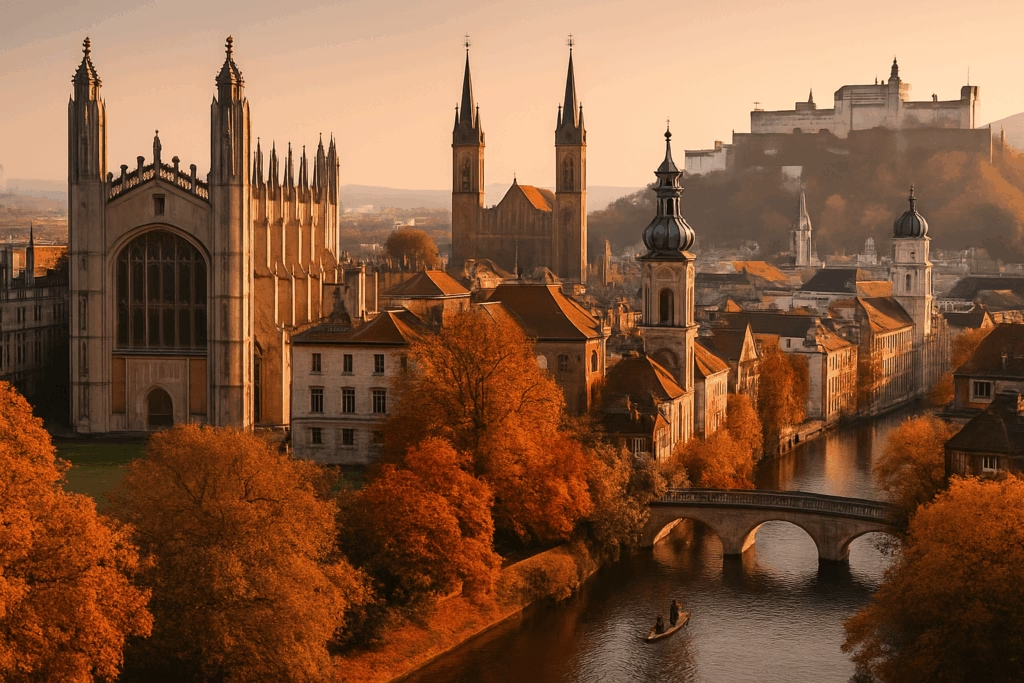
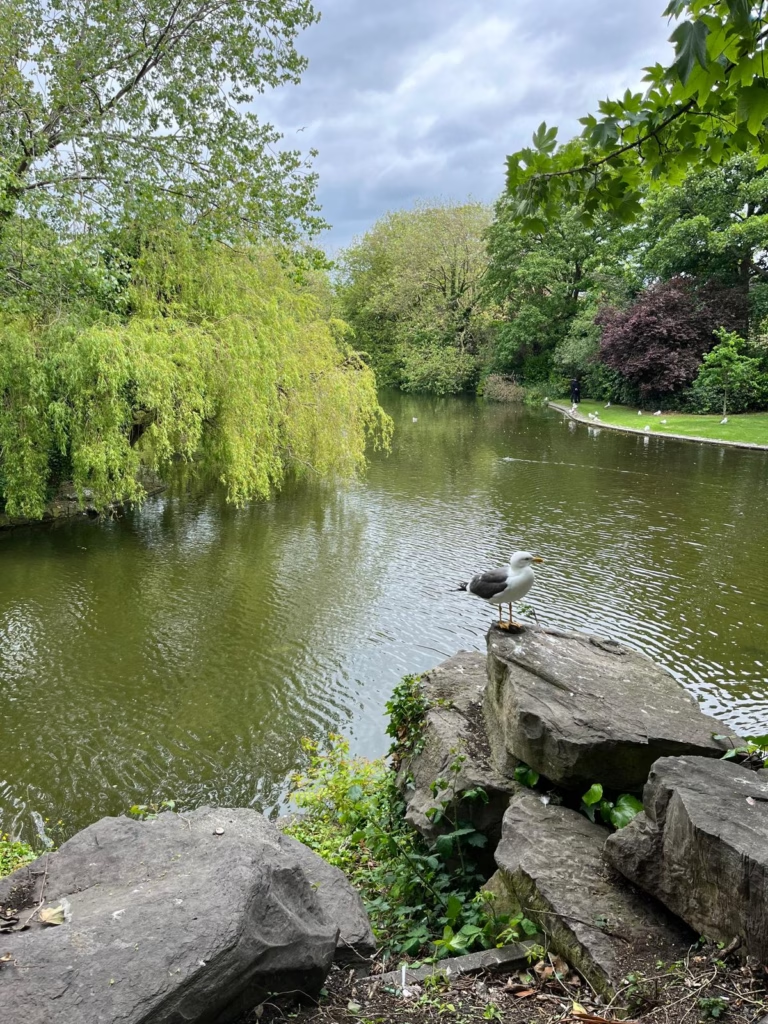
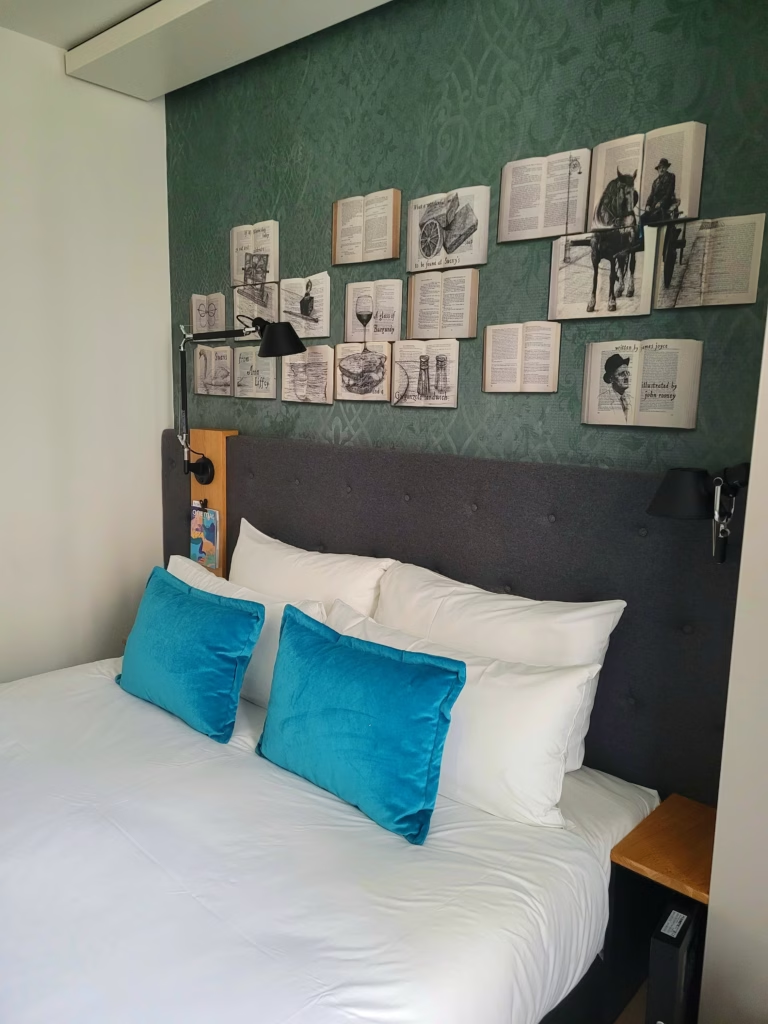
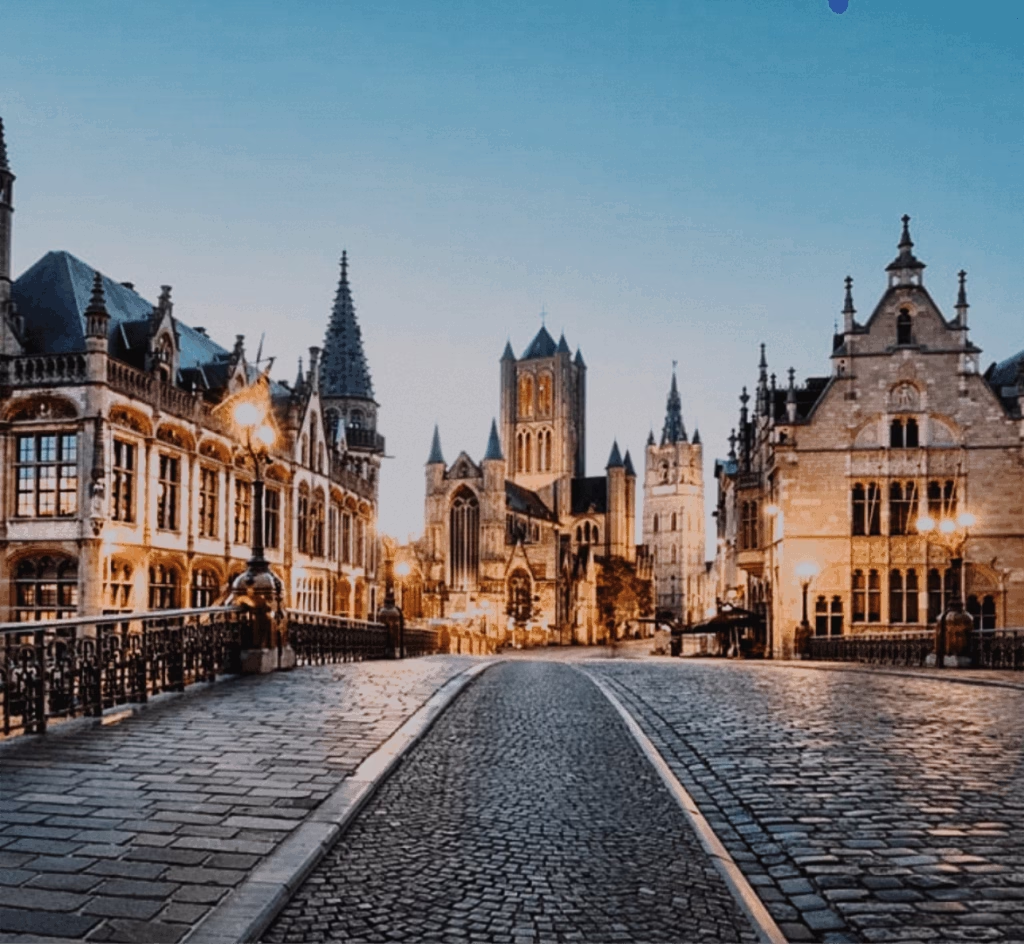

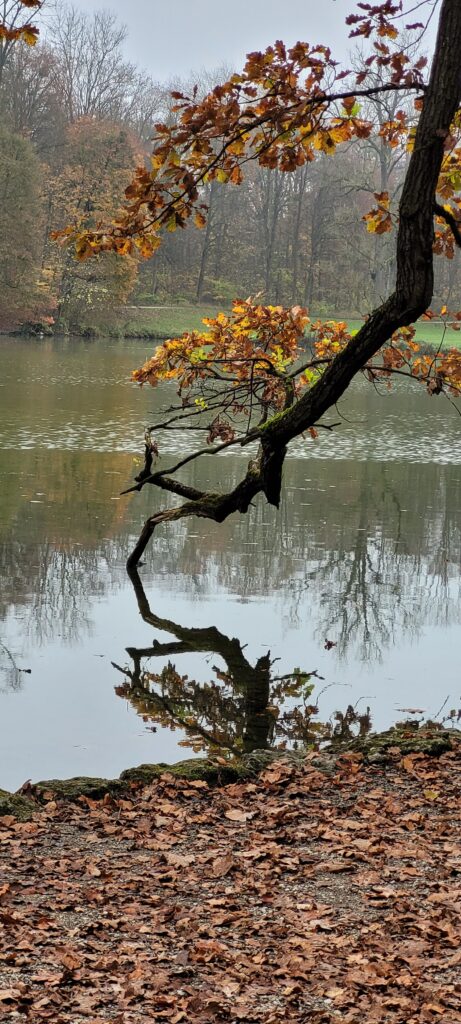
Schreibe einen Kommentar